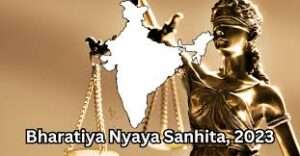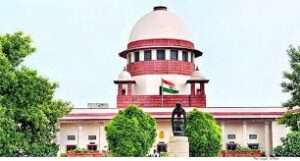
This article has been written by Akarsha Bajpai a law graduate from Lucknow University.

Introduction
Indian Evidence Act Sections 25 and 26, Section 76 of the Criminal Procedure Code, and Section 29 of the Police Act of 1861. The IPC’s Sections 330, 331 and 348 prohibit the torture of police officers, although they are not sufficiently strong to prevent such abuse or assault. According to the national campaign against torture, there have been over 1700 fatalities as a result of torture and incarceration. The Constitution or other legislation does not define torture. The term “custody” denotes protection and supervision. Even then, it suggests an arrest. It shouldn’t exhibit any ominous signs of aggression while in custody. No civilized law assumes that cruel treatment would occur while an individual is in detention.
The cruelest type of mistreatment in captivity is death. It happens most frequently when a police officer executes a convict by abusing their position of authority, employing excessive force, and torturing the person longer than is permitted. Any individual who passed away after being tortured by law enforcement or other officials—whether they were police officers or magistrates—is referred to as having died in a “custodial death” circumstance. The same heavy penalties as murder, rape, and other types of abuse apply under existing Indian law when physical abuse occurs in a detention situation.
The National Human Rights Commission has now made its most recent recommendations available to all state governments. In 1993, the Commission published broad guidelines stating that every custodial fatality had to be reported to the Commission within 24 hours of the event. These notifications were to be followed by post-mortem reports, judicial inquest reports, post-mortem videography reports, etc.
According to the exception to Section 300 of the Indian Penal Code, if a public official uses excessive force and kills someone, they are guilty of culpable homicide, which is a different crime from murder. Additionally, the Indian Penal Code’s Section 330 makes it quite clear that any public employee who injures a person in order to extract a confession is punishable by up to seven years in jail. The use of unlawful force by police officers is prohibited under national law.
The History of Custodial Deaths
4,484 fatalities in prison and 233 alleged police encounters have all been reported in India over the last two years, according to Nityanand Rai, the minister of state for the home, who made this statement earlier this week in Parliament. Custodial deaths can occur organically, without the assistance of the police, like when a criminal defendant or accused individual passes away from illness, for instance. A dilemma emerges when police involvement in someone’s death occurs while that individual is in their care. However, it is quite difficult to establish that the police were at fault due to the strategies they utilized in these situations. Sometimes, even before an arrest is made, the police abuse their authority, allowing them the option to argue that the defendants’ injuries weren’t brought on by violence that took place while they were in their custody but rather occurred earlier. Recently, the phrase “fake encounters,” which is also a sort of custodial death, has appeared in headlines. It is quite difficult to prove the police’s misconduct in these circumstances since they hold all the evidence and documents pertaining to the occurrence. It is therefore extremely difficult to demonstrate the authorities’ guilt and to prove that they are at fault. The Indian Constitution guarantees the security of everyone detained by the police and the court system, including prisoners and suspects. However, authorities like the police often violate these legal protections and torture detainees.
Landmark Cases:
Guidelines issued by the Supreme Court in the landmark case of Joginder Kumar v. State of U.P. and Others (1994 AIR 1349)are as follows: 1994 SCC (4) 260 The illustrious Supreme Court offers guidance on incarceration torture. The police officer is required to inform the apprehended person of this privilege before bringing him to the police station. The diary must include the name of the person who was notified of the arrest. It was further stated that the magistrate, before whom the arrested individual is brought, should be responsible for ensuring that these conditions have been met.
State of Madhya Pradesh v. Munshi Singh Gautam, Appeal (Crl.) 919 of 1999. According to the Supreme Court, the dehumanizing use of torture, violence, and murder in fundamental concerns discussing the validity of the rule of law and how the criminal justice system is run while incarcerated, have reached frightening proportions.
D.K. Basu v. State of West Bengal (1997 (1) SCC 416) is a well-known case. The Honorable Supreme Court published a list of 11 rules. A registry must contain information on every employee who handled the interrogation of the detained individual. At the moment of the arrest, a memorandum of arrest should be prepared. The signature of the inmate and the hour and day of the arrest must also be included on the paper. Police are required to provide detainees notice of their time, location, and custody arrangements. Within eight to twelve hours following the incident, police in the impacted region communicated through telegraph.
The prisoner must receive a copy of the Inspection Memo and both they and the arresting police officer must sign it. The prisoner is required to undergo a medical examination by a licensed physician every 48 hours while incarcerated within 12 hours of the arrest; the Magistrate must obtain copies of all papers, including the arrest note. Additionally, the police control room board is required to display information about the arrest and the person’s place of detention on a visible notice board. Articles 3 through 11(A) of the Universal Declaration of Human Rights (UDHR) provide that no one shall be subjected to inhuman or cruel treatment. All people have the right to equal legal protection. Everyone has the right to an adequate remedy from an appropriately qualified national tribunal. No one is ever arbitrarily detained. Each and every person has a right to an open and impartial hearing before a judiciary that is fair. Under current municipal, state, and federal legislation, anybody accused of committing a crime has the legal right to have their guilt confirmed via a public trial. Ex-post facto legislation must be protected for every accused individual.






